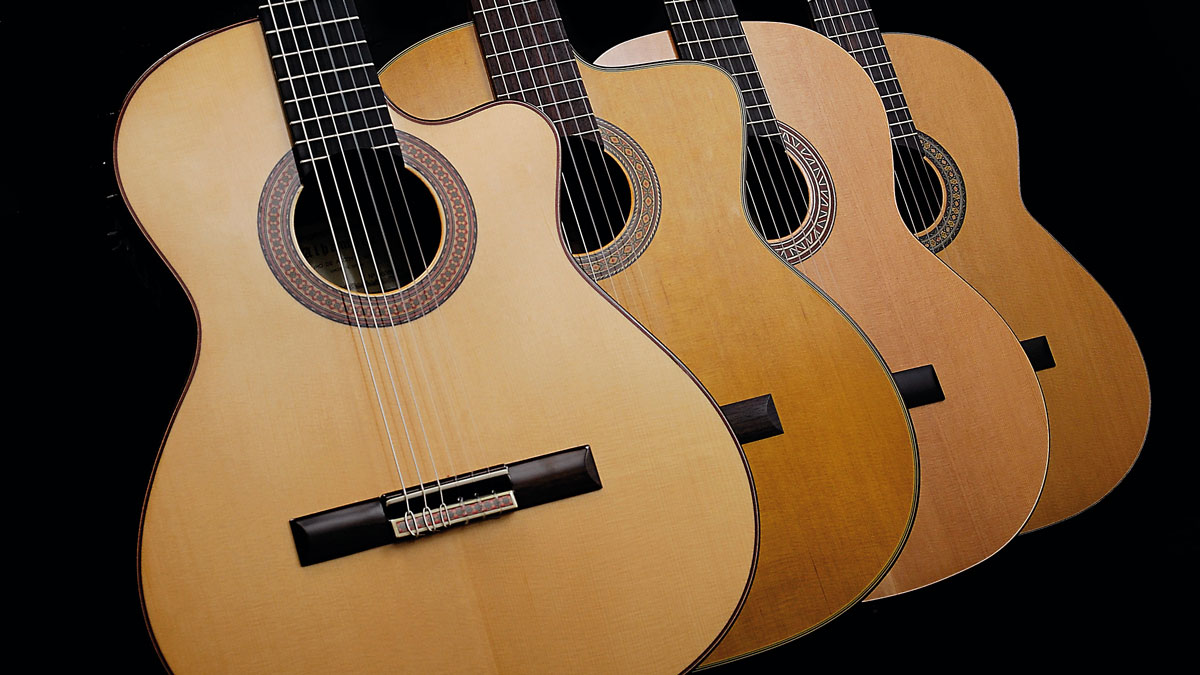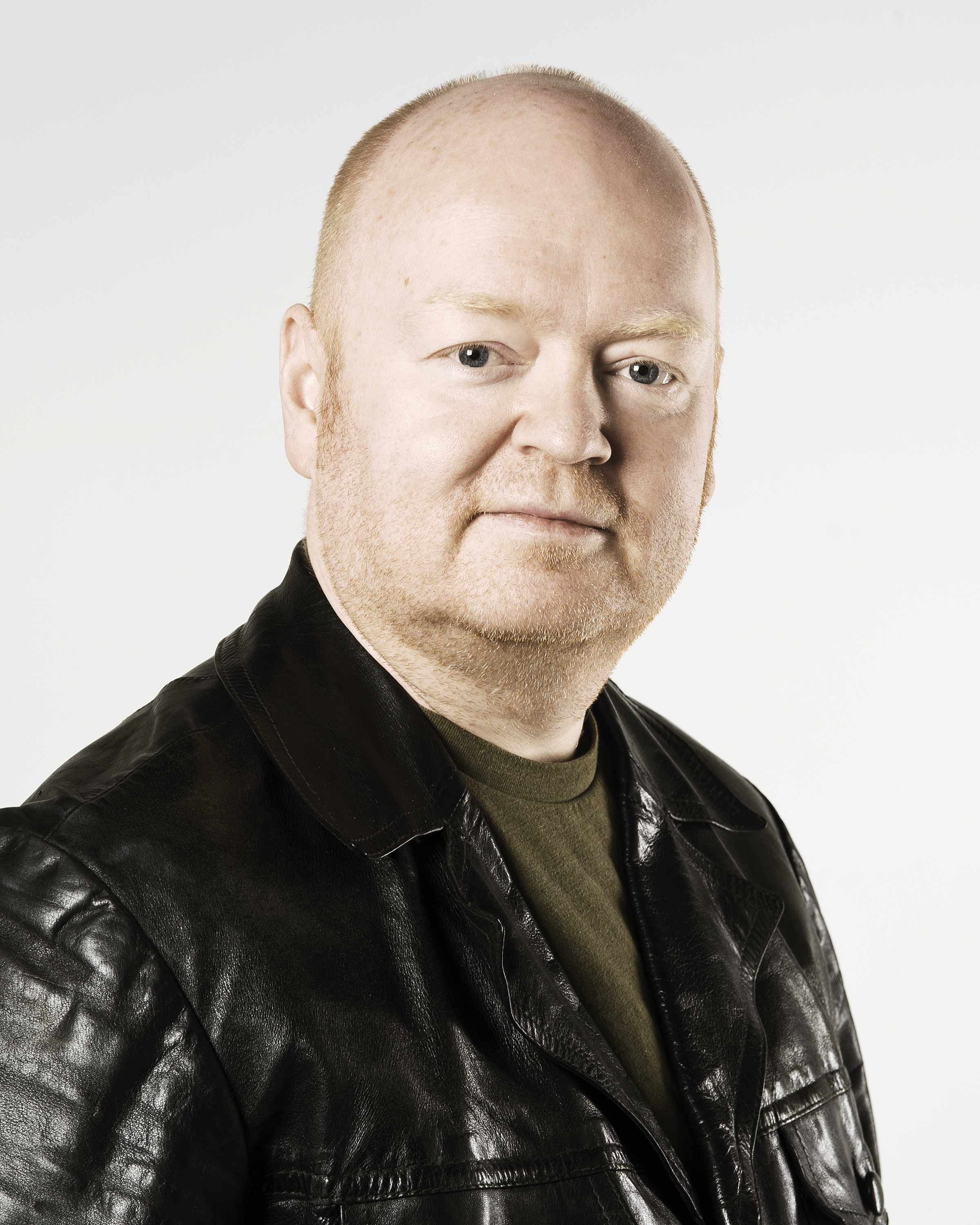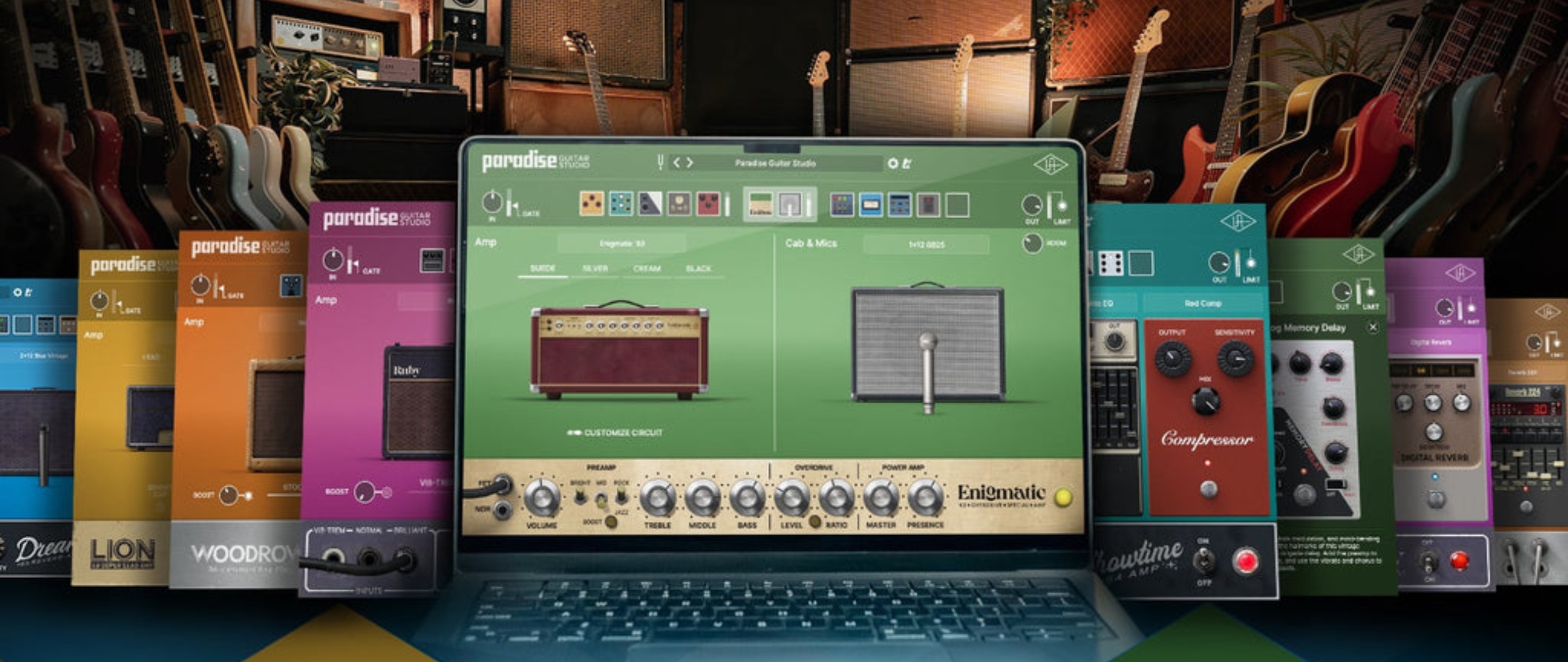Types of guitar explained: everything you need to know
From solidbody to semi-hollow, electric to acoustic, this beginner's guide will introduce you to every type of guitar

The word 'guitar' means something different for everyone. It could be the roar of a Les Paul electric through a Marshall guitar amp, the delicate fingerpicking of a seasoned classical player, or the resonant strum of a steel-string acoustic around a campfire.
Yes, the world of guitar is rich and varied, and encompasses a host of instruments that span a range of genres and timbres.
So, if you're taking your first steps in guitar, welcome! With this guide, we'll introduce you to the types of guitar that have evolved over the years, and help you figure out exactly which type of instrument you'd like to play.
We'll start unplugged, and work our way up to altogether noisier offerings...
Acoustic

Unlike electric guitars, which can be manipulated tonally with pedals and gizmos, an acoustic pumps out a sound fueled by its dimensions and body woods. That means you need to know what tone you want before you buy this type of guitar.
The biggest selling steel-strung acoustic guitar design of all time is the dreadnought. Initially developed by Martin Guitars for the Oliver Ditson Company in 1916, it became a fully-fledged Martin catalogue entry in 1931. And it's been the basis for most other designs ever since.
Dreadnoughts are great all-rounders. From folk to rock to bluegrass you'll get a good strumming sound, and a quality fingerpicked response. Jumbo guitars like the Gibson J-200 are all about the big noise for strummers.
All the latest guitar news, interviews, lessons, reviews, deals and more, direct to your inbox!
Smaller-bodied guitars like the Martin OOO and OM are fingerpicking delights
Smaller-bodied guitars like the Martin OOO and OM are fingerpicking delights. Note separation is what you want for that stuff and these guys willingly oblige. Many guitarists like to record with the more minuscule parlor-style guitars. These guitars team a tiny chassis with a regular-size neck.
As for wood, most acoustic guitars these days feature a spruce top teamed with various back and side timbers like rosewood, mahogany or modern wood substitutes like HPL (High Pressure Laminate).
Solid woods mature tonally with age but are generally more expensive. Laminate woods are more robust but don't offer the same level of tonal development. They can still sound great however.
The message is, try as many types of guitar as you can. It's the only way to be sure.
Acoustic-electric

It’s not just a clever name. An acoustic-electric (aka electro-acoustic) is basically a regular acoustic guitar that you can plug into a guitar amp. Once upon a time, you'd buy a cheap magnetic acoustic guitar pickup and clamp it into the big gaping hole in the face of your acoustic guitar. These days, things are a bit more sophisticated.
Brands like Fishman and L.R. Baggs offer systems that accurately reproduce your acoustic guitar's tone through an amp. Pickup types include a piezo strip hidden beneath the guitar's bridge saddle; a sensor adhered to the underside of the guitar's top; or a miniature microphone pointing at the strings from inside the instrument's body.
Some manufacturers, Yamaha for example, offer all three options in the same type of guitar. These can be blended together to provide an authentic-sounding acoustic tone when amplified.
Most modern electro-acoustics have a preamp that boosts the signal of whatever pickup type you have
The pickups are just the start of the amplification process. Most modern electro-acoustics have a preamp that boosts the signal of whatever pickup type you have. It will be battery-powered, feature volume and EQ controls, and often include an onboard tuner. Also, look out for a phase switch. This clever little thing helps counter unwanted feedback, that hideous electronic squeal that drives audiences crazy.
You'll also discover that many electro-acoustics come with a body cutaway. This allows all you showboaters better access to the upper frets on the guitar.
Nylon-string classical

A staple of campfire singsongs and mariachi bands, the Spanish or classical guitar is a small-bodied acoustic device with nylon strings.
Most if not all guitarists got their start on a classical. They’re perfect for kids to learn on because they can be inexpensive and come in 1/2, 3/4 and 4/4, aka full-size, er, sizes. The low tension nylon strings are easier on the fingers than the callous-causing steel examples loaded onto acoustic and electric guitars.
Don't dismiss nylon-strung guitars as just greasy kids' stuff, though. Obviously, these things are associated with serious classical artists like Segovia and Julian Bream. Full-size, very expensive ones, in their case.
They can be very cool, too. Two of the greatest nylon-string wranglers are country music's indestructible Willie Nelson, and late great guitar genius and actor Jerry Reed. Listen to Willie solo on his beat-up old Martin N-20 'Trigger' on City Of New Orleans for a beautiful nylon-string tone.
Check out Jerry on the intro of Elvis Presley's Guitar Man and US Male. His virtuosity is on full show on his instrumental classic The Claw.
Resonator

Imagine Jules Verne, H.G. Wells or any of those steampunk guys designed an acoustic guitar. It would probably look something like a resonator. These things are undeniably cool, but it’s what’s on the inside that makes them special.
First, a bit of history. In the 1920s, the acoustic guitar was becoming a growing fixture as a rhythm instrument in big bands and orchestras. The problem was that this new-fangled steel-strung machine couldn't compete with the horn players. There was no amplification at a guitarist's disposal in those days.
Despite the fact these guitars were intended for the big band jazz market, they gained greater popularity as bluegrass and folk blues instruments
It turns out that the solution to this lack of output was a mechanical 'speaker' with a spun aluminum cone. The concept was developed by John Dopyera at the request of steel guitarist George Beauchamp. Anyway, Dopyera realized that the usual method of creating acoustic volume, a vibrating top (aka soundboard) wasn't powerful enough. Instead, he directed the vibrations of the strings into three small metal cones and produced a much louder instrument.
Dopyera was instrumental in the formation of the two biggest names in resonator guitars, National and Dobro. Despite the fact this type of guitar was intended for the big band jazz market, they gained greater popularity as bluegrass and folk blues instruments.
These days, you can get one with a single large cone or three smaller cones. They come with wood or metal bodies and feature square or round neck options. Square necks are played face up on your lap with a slide or tone bar. Round necks are played like conventional acoustic guitars. Make sure you order the right one.
Electric
Hollowbody

Back in the '30s, '40s and early-'50s just about every guitarist played a big hollowbody jazz guitar. Distinguished by their arched tops and f-shaped soundholes they were produced by manufacturers like Gibson, Epiphone and D'Angelico.
Initially, these guitars were all acoustic. It was Benny Goodman guitarist Charlie Christian who pioneered the use of amplification on his Epiphone and Gibson guitars in the '30s and '40s. Charlie, who has a Gibson pickup named in his honor, is also credited as the pioneer of the guitar solo.
By the 1950s, jazz guitarists were routinely using guitars with pickups most notably the Gibson P-90 single coil and the later Seth Lover-developed humbucker.
In the 1960s, a new breed of thinline hollowbody guitars was on offer. The most famous of these is the Epiphone Casino made iconic by Beatle John Lennon.
Semi-acoustic/semi-hollow

Hollowbody guitars might look and sound awesome but they do have one disadvantage that solid bodies don't have. The hollowness leaves them prone to electronic feedback. Now, feedback can sound immensely cool if it's deliberate. Think Pete Townshend of The Who or Jimi Hendrix onstage at the Monterey Pop Festival in 1967.
Unwanted feedback is another matter entirely. Often hollowbody electric owners would stuff their guitars full of newspaper, cotton wool, packing peanuts, you name it, in an effort to silence the howling beast.
Gibson legend Ted McCarty came up with a better solution. In 1958, he released the now iconic ES-335 model. This semi-hollow guitar has a block running through the body. Yes, it made the guitar heavier. It also dramatically improved the feedback situation, and boosted the tone and sustain.
These days you'll find a host of guitars influenced by Ted's ingenious solution including the Epiphone Sheraton and the Gretsch Center-Block stuff.
It's a great option for anyone seeking to play blues or jazz, but it can also rock, too – just check out Dave Grohl and his Gibson Trini Lopez semi-hollow.
Solidbody

If it wasn’t for the solidbody electric guitar we’d probably all be playing banjos right now. Yeah, just let that sink in for a minute.
The world was a pretty uncool place in the early 1950s. Trad-jazz and cardigans were the order of the day. Then, stuff happened. Stuff like Elvis Presley, hot rods, Marilyn Monroe.
In 1950, Leo Fender released the single-pickup Esquire. The Broadcaster, the twin-pickup guitar later renamed the Telecaster came next. In 1952, Gibson unveiled its response, the Gibson Les Paul, inspired by the hit maker and inventor of the same name. The Gretsch Duo Jet landed in '53. The Fender Stratocaster a year later.
Solidbody guitars are tough, easy to transport and comfortable to play. You can tailor their sounds to your heart's content with effects
By the end of the '50s Gibson had invented various Les Paul models (Standard, Custom, Junior, Special) plus the ES-335, the Flying V and the Explorer. In 1961, it would reveal the coolest electric guitar of all time, the SG – even if it was called the Les Paul until 1963.
Solidbody guitars are tough, easy to transport and comfortable to play. You can tailor their sounds to your heart's content with effects. Even if you're not cool, a great-looking guitar can sort that out for you.
You have access to an incredible array of solidbody types of guitars. Your mission is to try as many as you can. That's how you find out whether you like a fat, thin or medium neck; the sound of single coils or humbuckers; even if you prefer a light or heavy body weight.
Maybe you like the tighter string tension of a 25.5" scale Fender or the easier bending inherent in the 24.75" scale of a Gibson guitar. You might even prefer the longer scale and deep twang of a baritone.
Just don't assume a guitar is best because it's more expensive. Many guitarists have enjoyed that eureka moment when they find an inexpensive instrument that blows their mind.
Bass

Do you dream of standing motionless in the corner of a stage while the singer and lead guitarist get all the attention? Simply buy yourself a bass guitar. Oh, and before you write in, Red Hot Chili Peppers bassist Flea is the exception to many rules, not just this one.
We jest, of course. These days you can buy acoustic, acoustic-electric, solid, semi-solid and almost body-less headless basses. Strings range from four, five, six, eight to, well, whatever you can handle.
Back in the '50s, everyone was using upright basses made by the likes of Kay and Epiphone. This is despite the fact that Leo Fender had invented an electric solidbody in 1951 called the Precision Bass.
It wasn't until the '60s that soul bassists like Motown's James Jamerson and Donald 'Duck' Dunn at Stax in Memphis unlocked the potential of Leo's four-string masterpiece. Over in the UK, the same thing happened at the hands of John Entwistle of The Who.
Lapsteel/pedal steel

Like its name suggests, a lap steel is played face up on your upper legs while you're sitting down. It's basically a board with strings running from one end to the other. The action or string height is high and requires that the thing is played with a slide or solid metal tone bar.
These things are often referred to as Hawaiian guitars thanks to the style of music that brought them to prominence. These days we associate them most with classic country music, specifically that style exemplified by Hank Williams Sr in the '40s and early '50s.
A pedal steel is better acquainted with the more sophisticated 'Nashville Sound' of the 1960s and beyond. Nothing is more country than a pedal steel, except perhaps a pickup truck, a dead dog... and a big hat. These types of guitars have legs and a series of pedals, pulleys and levers to stretch the strings. They're infamously hard to play but super-sweet to listen to.
Need more help choosing the right guitar for you? Well, check out more of our handy buyer’s guides below.
- Make some noise with the best beginner electric guitars
- You’ll need one of the best beginner guitar amps, too
- Start your musical journey with the best acoustic guitars for beginners
- Hold down the low-end with the best beginner bass guitars
- Here is our pick of the best beginner classical guitars
- Find your sound with the best guitar pedals for beginners
- Not ready for guitar? Try one of the best beginner ukuleles
Ed Mitchell was Reviews Editor on Total Guitar magazine from 2003, and his guitar-modding column, Ed’s Shed, appeared in print on both sides of the Atlantic (in both Total Guitar and Guitar World magazines). He was the Editor of The Blues Magazine from 2012-16, and a contributor to Guitarist, Classic Rock and Louder. He died in October 2022, aged 52. Between them, the websites Guitar World, Louder and MusicRadar host over 400 of his articles – among them interviews with Billy Gibbons, Paul Weller, Brian Setzer, profiles on Roy Buchanan, Duane Allman and Peter Green, a joint interview with Jimmy Page and Jack White, and dozens of guitar reviews – and that’s just the ones that made it online.


